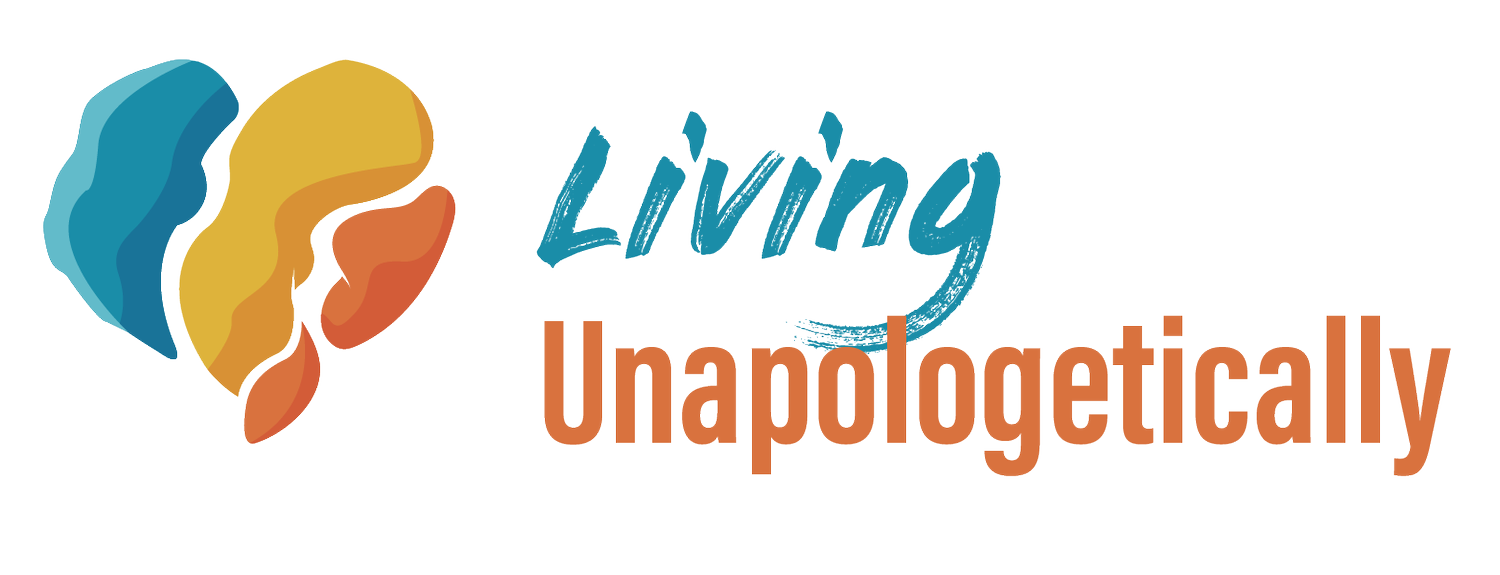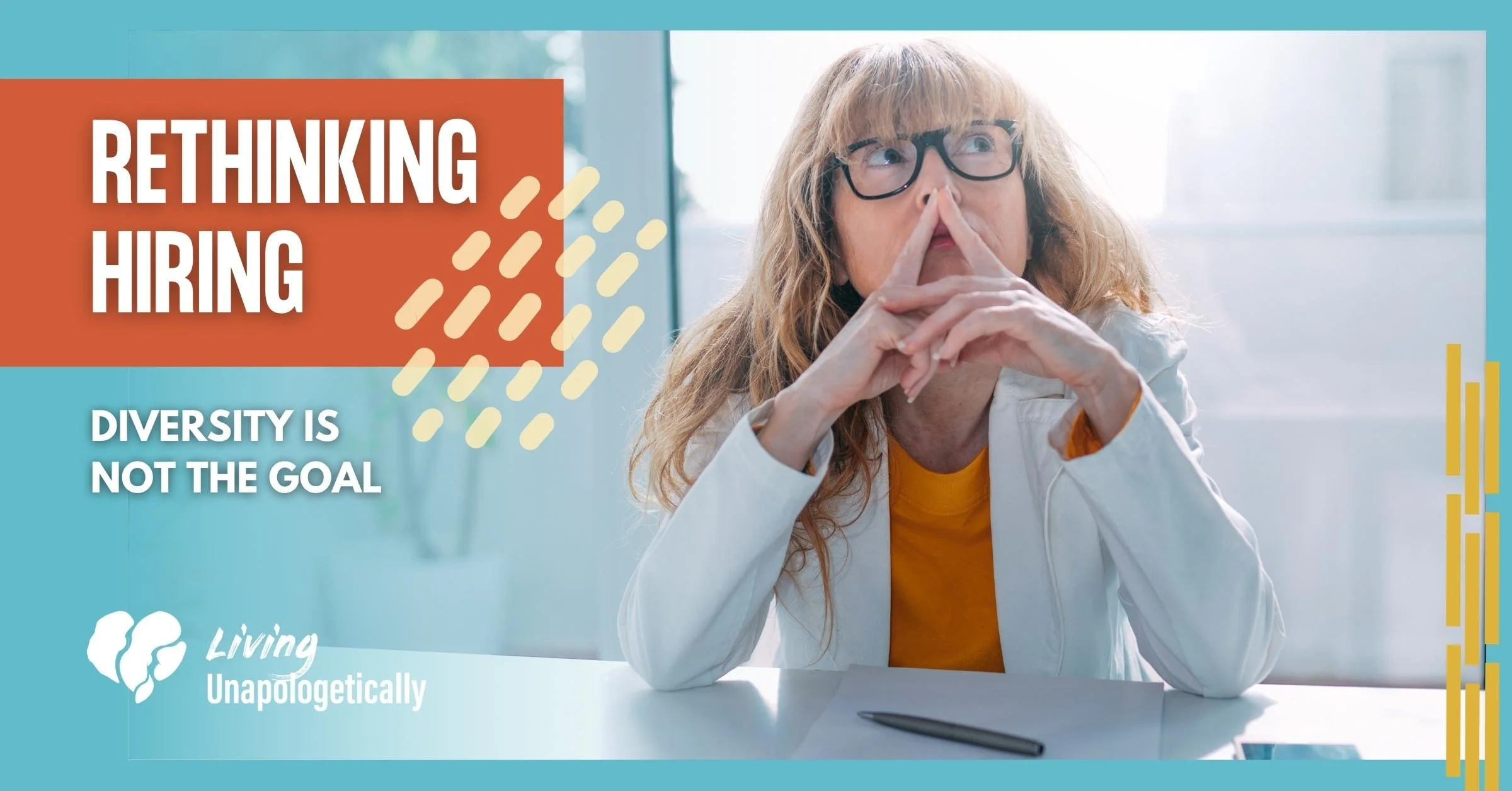Rethinking Hiring - Diversity is Not the Goal
The year 2020 made it impossible to ignore what had bubbled under the surface for years - Black, Indigenous, and People of Color (BIPOC) are targets of systems and structures, like law enforcement and healthcare, that continue to oppress and prevent true equity in our society. This led to louder calls for companies and organizations across industries to rethink practices and commit to anti-racist policies. In the best cases, this shift led us at Living Unapologetically to work with groups that demonstrated a genuine commitment to increasing inclusion and emotional safety in the workplace. In the worst cases, we saw empty promises that declared an intention to do better but lacked any follow-through and commitment. One example of these performative actions? The Diversity Hire.
At face value, hiring more staff from different backgrounds and identities is not a bad thing. The danger comes from hiring diverse staff members and failing to create an inclusive environment where BIPOC staff feel safe enough to bring their full selves to work. Without a workplace focused on equity and inclusion, the benefits of diverse perspectives that staff bring will never be realized. So how can an organization identify if it’s falling into the trap of superficial diversity hiring?
HOW TO SPOT A DIVERSITY HIRE
No matter your industry, your organization is a complex system of relationships and interactions between people, and the interconnectedness of these levels has implications for the concept of diversity hires — and vice versa. As a leader, you must be aware of the dangers of this practice:
INDIVIDUAL LEVEL
If you are a leader who hired an individual to check a specific diversity box, you may need to come to terms with the individual biases that led you to make the hire in the first place. Making this hire but expecting them to reinforce practices that get in the way of creating safety does more damage to your organization’s equity journey than doing nothing at all.
INTERPERSONAL LEVEL
As a leader, your days are filled with opportunities to either think progressively about your hiring practices or fall into the trap of diversity hiring. Treating staff like diversity hires can look like tokenizing individuals or intentionally leaving people out of discussions because you’re afraid they’ll bring up something that challenges how things have always been done. At the most extreme, and possibly without realizing it, you are weaponizing your BIPOC staff against progress by putting their identities on a pedestal while expecting them to reinforce harmful practices. There’s a good chance these practices have been in place for so long that people engage in them without even realizing it, meaning BIPOC staff continue to experience internalized oppression in the workplace.
INSTITUTIONAL LEVEL
Your organization is engaged in the practice of diversity hires when you expect BIPOC staff to fit into the organization’s dominant identity and make it difficult for them to bring in other perspectives. And, if you haven’t reviewed and updated your policies and procedures to reflect current best practices, it makes it even more difficult to change how your company operates even if you want to move away from hiring for diversity’s sake. Instead of spending money on salaries to meet diversity quotas, you can move beyond the trap of diversity hiring by investing in inclusive practices that create more sustainable equity.
If looking at this from the individual, interpersonal, and institutional level feels familiar - you’re right. As we see in the Bias-Conscious Leadership approach, making the necessary changes to create safety and inclusion in the workplace cannot happen until we engage in thoughtful reflection to make changes across multiple levels.
CONSEQUENCES OF DIVERSITY HIRES
It is important to identify when an organization is hiring just for diversity’s sake because it has significant implications for your organization’s goals. These consequences occur most immediately around equity, diversity, and inclusion goals but also more broadly among goals for an organization’s overall success. An organization that fails to evolve beyond the practice of diversity hires risks:
Sending the wrong messages to customers and clients - your customers and clients do not exist in a vacuum and neither does your organization. As matters of inclusion gain prominence, customers and clients can sense when an organization is engaged in meaningful equity work or when it is engaging in performative actions solely for optics.
Reinforcing traditional standards of professionalism - white supremacy culture has been embedded into our workplace, making it difficult to untangle long-held practices from policies and everyday operations. Overlooking the valuable perspectives of BIPOC staff and, instead, expecting them to uphold the status quo just reinforces the traditional standards of professionalism that have already been so harmful for organizations.
Damaging attempts to build trust with staff - if you’re reading this post, there’s a good chance your organization has some work to do around equity, diversity, and inclusion. Bringing on BIPOC staff solely as diversity hires who are just in place to maintain the status quo while giving your organization the appearance of being diverse erodes an already fragile trust dynamic between leadership and staff. Staff are left with a false impression that things will change when the opposite is actually true.
Do you see these patterns playing out in your organization? Can you commit to doing one thing this week that pushes you to create more meaningful opportunities for your BIPOC staff?
If you don’t know where to start, check out my book Bias-Conscious Leadership or get in touch today.
Charmaine is a Relational DEI expert who sits at the intersection of thinking, feeling, and doing. She is an author, facilitator, skill builder, safe-space holder, family member, partner, and friend. And in all of those, her DEI lens is in constant use. Charmaine uses a social justice lens to help clients explore their individual and organizational needs amidst the backdrop of power, privilege, and oppression. You can access her book (Bias-Conscious Leadership), guided meditations, free tips sheets & guides, and blog posts on her website, www.livingunapologetically.com.




